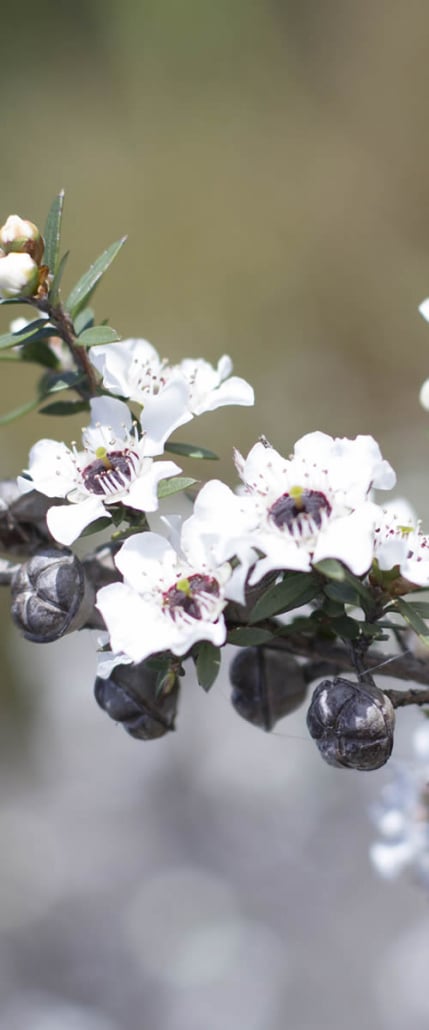MNZ specializes exclusively in producing monofloral Manuka honey sourced from the blossoms of the Leptospermum Scoparium, a diverse range of plants that vary from small shrubs to large trees native to New Zealand. Our strategic hive placement in one of New Zealand’s most remote regions allows our bees to work undisturbed, resulting in the production of exceptionally high-quality Manuka Honey.
The significance of Methylglyoxal (MGO) in Manuka Honey has been elucidated by Professor Thomas Henle through extensive research. MGO measurement serves as a science-based qualification and is a mandatory requirement set forth by the New Zealand Ministry for Primary Industries (MPI). This rigorous standard ensures the quality and authenticity of our Manuka honey products.
Science
Professor Thomas Henle’s groundbreaking discovery of Methylglyoxal (MGO) in Manuka Honey in 2006 marked a significant milestone in research. Since then, his extensive work has shed light on the importance of MGO as a naturally occurring compound in Manuka Honey, responsible for its unique, high-quality, and natural bioactivity.
MGO is quantified in milligrams per kilogram (mg/kg) and exhibits a range from 100+ to 1500+ mg/kg in Manuka Honey. When choosing Manuka Honey, the MGO content is a crucial factor to consider. For instance, MGO 100+ indicates the presence of 100 mg/kg of Methylglyoxal (MGO) in the honey, providing valuable insight into its quality and bioactive properties.
Scientific insight
Scientists such as Professor Thomas Henle, Professor Peter Molan, Professor Keiji Terao and Dr. Robert Laheij have each carried out scientific research into the unique qualities that Manuka Honey naturally contains. Professor Thomas Henle and his team have shown that Methylglyoxal (MGO) is directly related to the unique, high-quality and natural bioactivity of Manuka Honey.
- Quote Thomas Henle
“A grading system must be scientifically sound, g based on a method that has been published, tested and can be used in laboratories, this is certainly the case for the Methylglyoxal (MGO) Manuka Honey classification “
Professor Thomas Henle of the Technical University of Dresden, who in 2006 showed that methylglyoxal as a compound is responsible for this unique anti****** effect and thus characterises the unique properties of Manuka honey, also says that testing for methylglyoxal levels in Manuka honey is a reliable, quantitative method.
Professor Thomas Henle (discoverer MGO)
- Quote Peter Molan
“Testing for Methylglyoxal (MGO) is a clear and unambiguous way of letting consumers know that this unique high anti******* activity is real, special and exclusive to Manuka Honey.“
Professor Peter Molan (discoverer of the UMF value)
MGO (Methylglyoxal) as a scientific benchmark
Measuring the presence of Methylglyoxal (MGO) is one of the most important compounds in Manuka Honey. Manuka Honey MGO 550+ should contain at least 550 mg/kg Methylglyoxal (MGO). The higher the Methylglyoxal (MGO) values, the more powerful unique, high-quality and natural bioactivity.
Professor Peter Molan has done very long and above all extensive research into Manuka Honey and its unique and special qualities. Peter Molan, who works at the University of Waikato, assembled a group of scientists there, called the Waikato Honey Research Unit, to investigate and study the complex composition of Manuka Honey and its unique properties. Professor Peter Nolan had set up a gradation system in consultation with the Active Manuka Honey Association (AMHA) for a standardization in Manuka Honey production, called UMF (Unique Manuka Factor). Professor Peter Molan has discovered that Manuka Honey has a certain unique effect; he called this UMF, but at the time he could not determine which component in the Manuka Honey was responsible for this. Professor Peter Molan passed away in 2015.
MANUKA HONEY WITH MGO (METHYLGLYOXAL)
MNZ’s MGO 100+ Manuka Honey
contains a minimum of 100 mg/kg Methylgyloxal (MGO)

MNZ’s MGO 250+ Manuka Honey
contains a minimum of 250 mg/kg Methylgyloxal (MGO)

MNZ’s MGO 400+ Manuka Honey
contains a minimum of 400 mg/kg Methylgyloxal (MGO)

MNZ’s MGO 550+ Manuka Honey
contains a minimum of 550 mg/kg Methylgyloxal (MGO)

MNZ’s MGO 1000+ Manuka Honey
contains a minimum of 1000 mg/kg Methylgyloxal (MGO)

MNZ’s MGO 1200+ Manuka Honey
contains a minimum of 1200 mg/kg Methylgyloxal (MGO)

MNZ’s MGO 1500+ Manuka Honey
contains a minimum of 1500 mg/kg Methylgyloxal (MGO)


